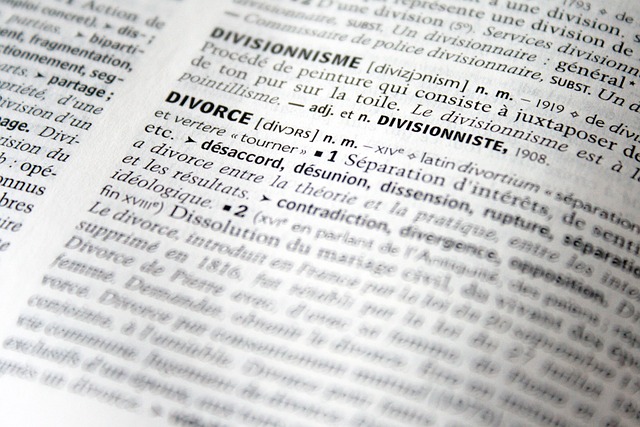When dissolving a business partnership amicably, navigate complex legal and financial aspects with care, prioritizing mutual respect and open communication. Divide assets, agree on liabilities, plan operations winding down, and seek legal counsel to ensure fair, documented terms. Proactive measures like open dialogue, mediation, and clear agreement terms prevent disputes, foster relationships, and save costs. Regularly review partnership agreements to minimize complexities and establish dispute resolution mechanisms.
Litigation Types: Navigating the Complexities of Business Partnerships and Their Disruptions. This comprehensive guide explores critical aspects of business partnership dissolutions, offering insights into amicable agreement steps, common legal dispute causes, and alternative dispute resolution (ADR) options. Learn preventive measures for fostering successful partnerships, ensuring a smooth transition when necessary. Discover expert tips on achieving a business partnership dissolution with minimal conflict.
- Understanding Business Partnership Dissolutions
- Amicable Agreement: A Step-by-Step Guide
- Common Causes of Legal Disputes in Partnerships
- Alternative Dispute Resolution (ADR) Options
- Preventive Measures for Partnership Success
Understanding Business Partnership Dissolutions
When considering the steps to dissolve a business partnership amicably, it’s crucial to understand that ending a business relationship can be complex, especially when both parties have invested significant time and resources. The process involves careful navigation through legal and financial aspects to ensure a smooth transition for all involved, including corporate and individual clients.
This dissolution should be approached with mutual respect and open communication. For his clients, it’s essential to document the terms agreed upon, ensuring they are fair and protect both parties’ interests. This can include the division of assets, liability agreements, and a clear plan for winding down operations, especially if there are white collar and economic crimes involved. The goal is to part ways on good terms while mitigating potential legal issues that could arise from an uncontested separation.
Amicable Agreement: A Step-by-Step Guide
When a business partnership reaches an impasse or becomes unsustainable, reaching an amicable agreement is often the best course of action to avoid costly and protracted litigation. The goal is to dissolve the partnership on mutually agreeable terms. This process involves several key steps that both parties should understand and follow.
First, it’s crucial to initiate open and honest conversations about the issues at hand. This dialogue should aim to identify the root causes of the dispute without assigning blame. Next, each party should consider their respective rights and obligations under existing agreements or state laws. In many cases, especially during white collar defense or when navigating all stages of the investigative and enforcement process, legal counsel can play a pivotal role in guiding negotiations. Once a mutual understanding is reached regarding responsibilities and potential outcomes, formal discussions can commence. These discussions should lead to a comprehensive agreement that addresses financial settlements, asset distribution, and any other outstanding matters. By taking these steps, business partners can ensure a smoother transition and preserve their working relationships, avoiding the indictment and potential legal complications that often arise from hostile litigation.
Common Causes of Legal Disputes in Partnerships
Partnerships, while beneficial for many businesses, are not immune to disputes. Common causes of legal disagreements among partners include differences in management styles, lack of transparency in financial matters, misinterpretations of initial partnership agreements, and unresolved personal conflicts. When tensions rise, it’s crucial to remember that amicable dissolution is often the best path forward for both parties involved—both corporate and individual clients alike.
Taking proactive steps to end the partnership on good terms can lead to a complete dismissal of all charges in certain cases. This process typically involves open communication, mediation, or seeking legal counsel specializing in general criminal defense. By addressing issues early and with mutual respect, partners can avoid costly litigation and preserve their professional relationships.
Alternative Dispute Resolution (ADR) Options
Alternative Dispute Resolution (ADR) offers a range of options for resolving conflicts outside of traditional courtroom battles. When it comes to dissolving a business partnership amicably, ADR can be a game-changer. Steps to dissolve a business partnership smoothly often involve negotiation and mediation, where parties work together to reach an agreement without the need for legal action. This approach not only saves time and money but also helps preserve relationships, which can be crucial for future collaborations.
Among the various ADR methods, mediation stands out for its ability to facilitate open dialogue between partners. A neutral mediator assists in these discussions, ensuring both sides feel heard and respected. This process aims to uncover underlying interests and concerns, leading to creative solutions that meet the needs of each respective business. Moreover, an unprecedented track record of successful partnerships can often be a driving factor in adopting ADR, as it demonstrates the effectiveness of collaborative problem-solving over adversarial litigation.
Preventive Measures for Partnership Success
Maintaining a successful business partnership requires proactive measures to prevent disputes and conflicts. While some issues may arise despite efforts, having a strategy in place can significantly reduce the likelihood of costly legal battles, particularly high-stakes cases. The key lies in open communication, clear agreements, and mutual understanding from the outset. Establishing well-defined roles, responsibilities, and profit-sharing structures ensures that both parties are on the same page, minimizing ambiguity that could lead to misunderstandings or malice.
Regularly reviewing and updating partnership agreements is essential, especially as businesses grow and evolve. This process allows for the incorporation of new terms, addressing potential issues before they escalate. Additionally, setting up mechanisms for dispute resolution, such as mediation or arbitration, can offer a cost-effective alternative to lengthy court battles. By taking these steps to dissolve a business partnership amicably, entrepreneurs can avoid the complexities and expenses of all stages of the investigative and enforcement process, fostering an environment conducive to collaboration and mutual success.
Understanding the different litigation types, such as amicable agreements and alternative dispute resolution (ADR), is crucial for fostering successful business partnerships. By recognizing common causes of legal disputes and taking preventive measures, businesses can navigate partnership dissolutions more smoothly. Following the steps outlined in this article—from amicable agreement guides to ADR options—will help ensure a mutually beneficial outcome when dissolution becomes necessary. Remember that proactive approaches to partnership management significantly reduce the likelihood of costly litigation.






